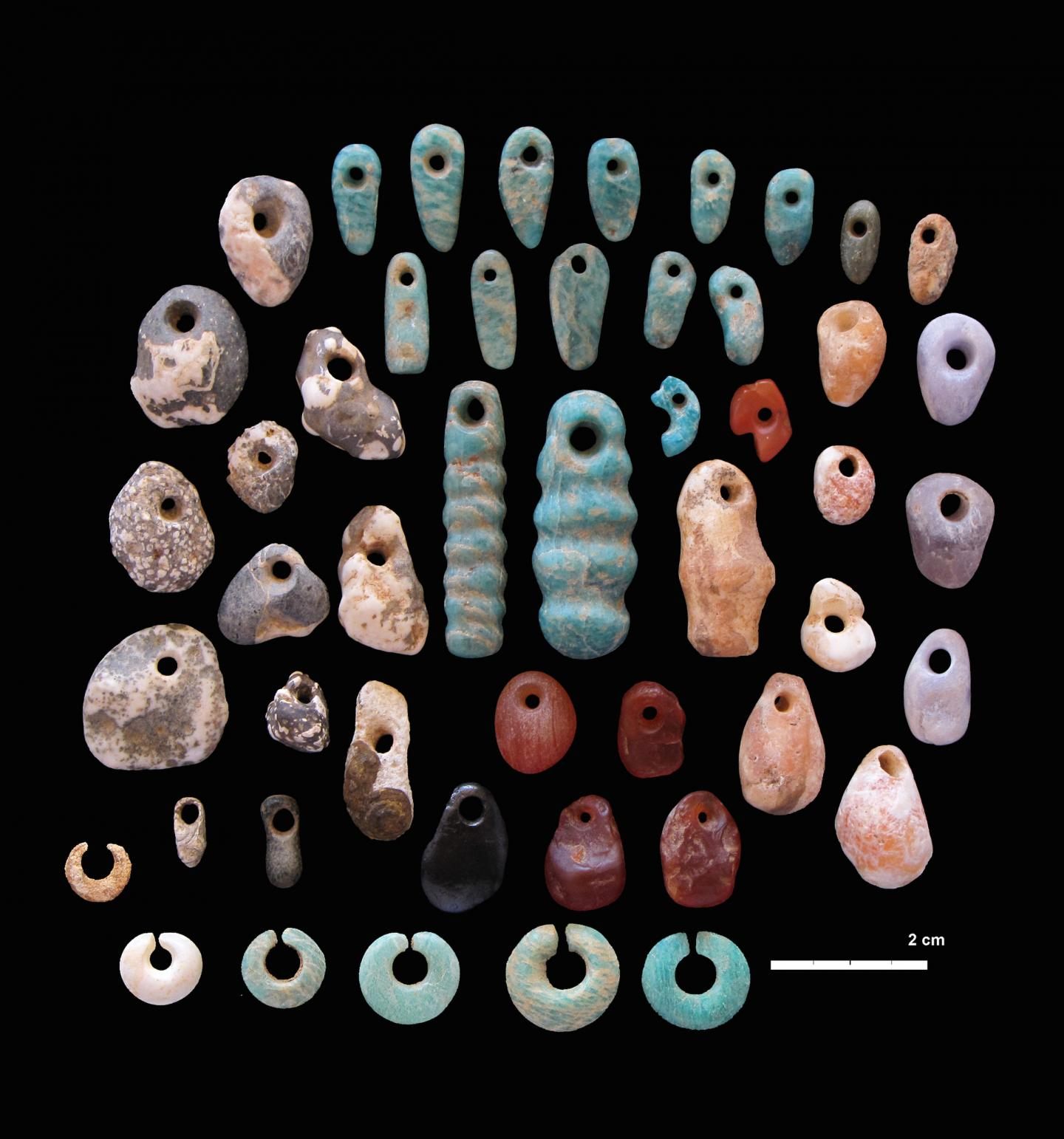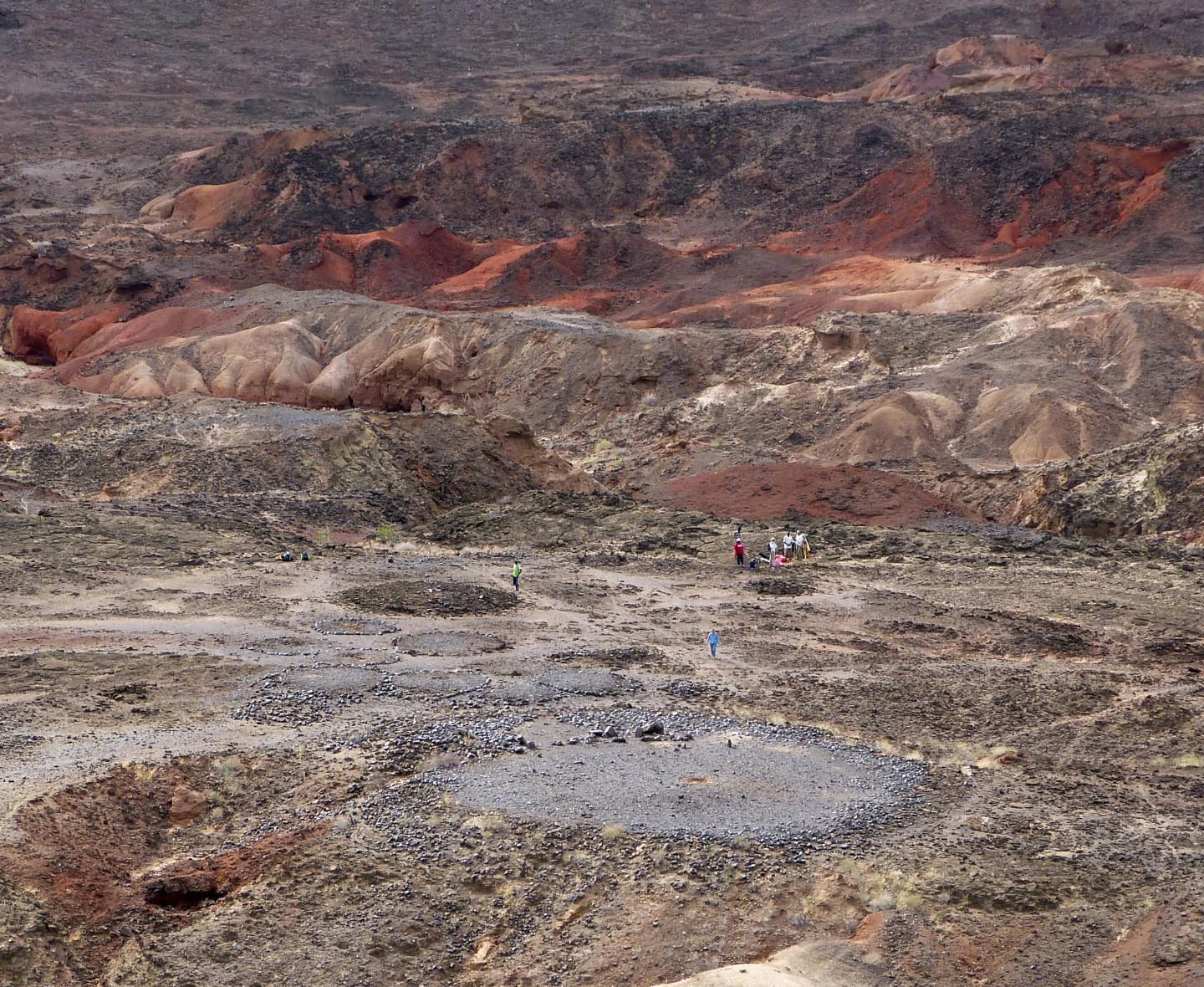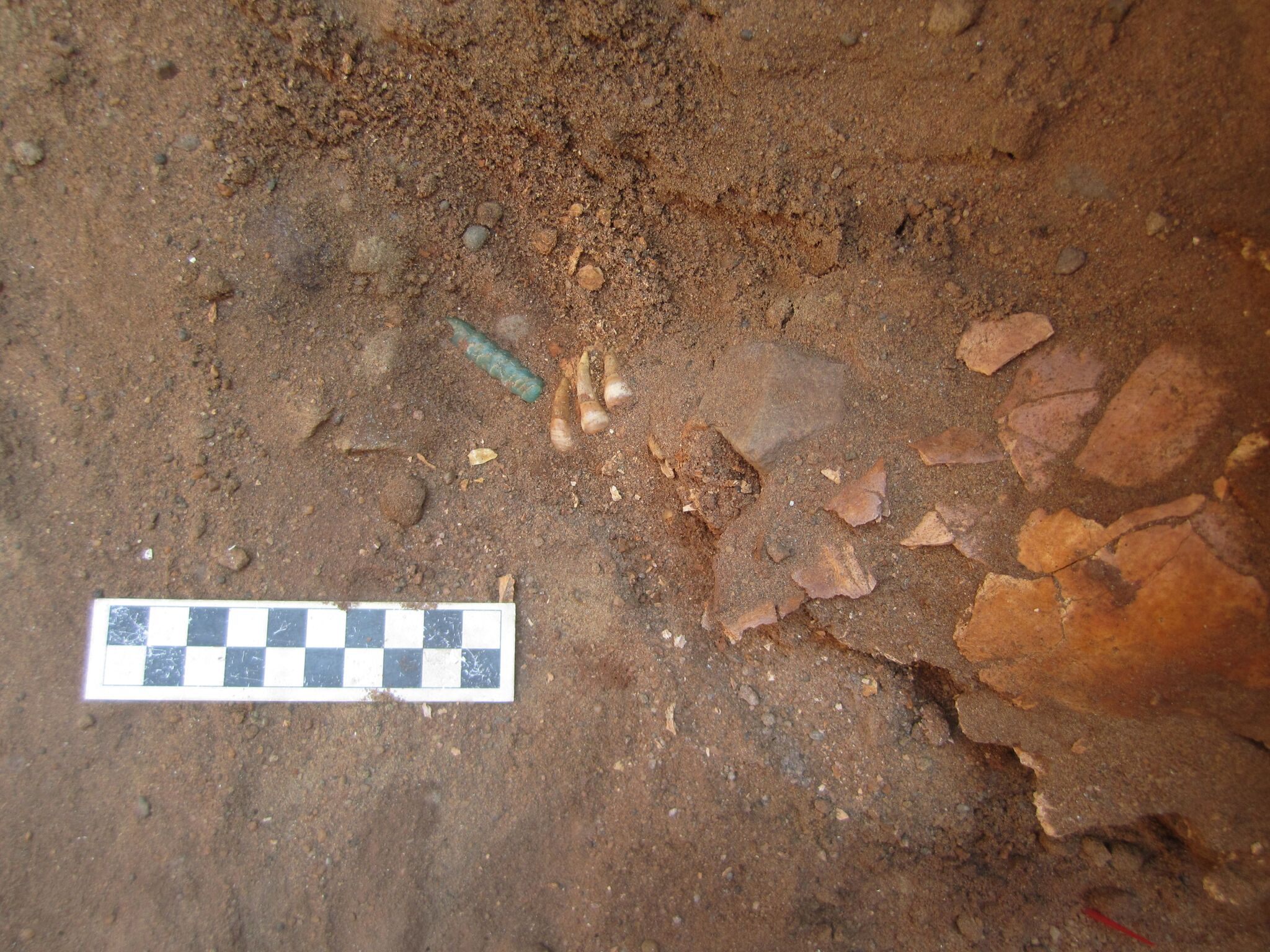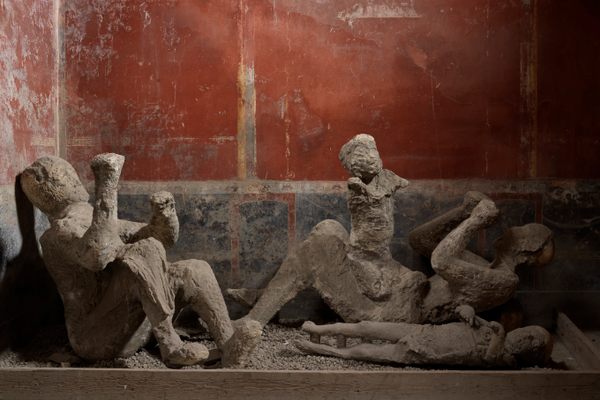Lessons From a 5,000-Year-Old Kenyan Cemetery
Logatham North Pillar Site is upending old assumptions about why people make monuments.

About five millennia ago, between 3000 and 2000 B.C., a man died somewhere near the shores of Lake Turkana in what is now Kenya. He had lived during what we, with the benefit of hindsight, can characterize as a time of turmoil. In the centuries before, his community of sheep, goat, and cow herders had moved to the Turkana area from the Sahara, driven southwest as their former home turned from a lush, green landscape into the desert we know today. There, they might have met a group of foragers and fishers—themselves likely stressed out because their lake was shrinking. All would have somehow had to learn to live together, changing as their environment changed.
We may not know the specifics of his life, but from what we know of his community’s burial practices, we can reconstruct what happened after. When this man died, his community members likely arranged his body into a specific position, and bound it tightly in cloth. They carried it up a winding trail to the top of a hill. There, they laid it alongside the bodies of hundreds of other community members who had passed away: men, women and children, all buried next to each other in a giant cavity dug into the sand and bedrock. They left this particular man with what archaeologists assume was one of his prized possessions: an intricate headpiece made out of 405 gerbil teeth, plucked from at least 113 individual gerbils.
The man was buried at what is now known as Lothagam North Pillar Site, the largest monumental cemetery in Eastern Africa. In a recent paper in the Proceedings of the National Academy of Sciences, a team of researchers describes what they’ve discovered about the site over the course of a decade of excavation and study. Their findings shed light on the memorializing practices of this particular society, and are helping to revise ideas about why people make monuments at all.

Lothagam North Pillar Site is located on the southwest edge of the lake, a little over four miles from its shore. After they stopped burying people in the cavity, the community filled it in with rubble and topped it with round basalt pebbles. They then ornamented the surrounding area with stone circles, pillars, and cairns, all highly visible against a background of red sandstone and black basalt. Five thousand years ago, “it would have been on the very edge of Lake Turkana,” says Elizabeth Sawchuk, the project’s lead bioarchaeologist and one of the paper’s authors. “It would have been jutting into the lake, almost like a peninsula. It would have been absolutely spectacular to look at.”
The Turkana people, who came to live around the lake within the past millennium, have stories about the monumental site: they say that the pillars were once dancers, and were turned to stone by a vengeful god after he came to a party in disguise and they made fun of his clothes. “When Turkana people pass these sites, they’ll often leave a pebble on the pillars as a memento,” says Sawchuk. “They regard themselves as the guardian communities of these sites.” But since Western archaeologists first began investigating the site a few decades ago, they’ve been looking for their own explanations of how and why the pillars got there.
As Sawchuk explains, for many years, prevailing scholarship held that only certain types of societies engaged in monument-making. First, it was assumed that any group who wanted to take the time and energy to build something so large would be sedentary—that is, spend most of their lives in one place. “People want to put a big monument where they live, in their own backyard,” she says. Second, they needed the ability to produce enough food that people could play different roles within the society: some people could farm, while others could be scribes, priests, or kings.

This leads to the last supposed prerequisite for monument-building societies: social stratification. “Somebody amasses enough resources and power and status that they’re able to command a bunch of labor,” says Sawchuk. Take the Great Pyramid of Giza, for example: the pharaoh Khufu conscripted thousands of lower-status workers to build it in his honor.
Lothagam North is certainly a monumental site: it has large architectural structures, and a specific memorial function. But the society that built it doesn’t meet any of these criteria. “You don’t have people who are settled down and living in one place,” says Sawchuk—instead, you have nomadic pastoralists, who led their flocks from grazing land to grazing land, often moving every few days. “You’re not going to have a whole bunch of food surpluses,” because no one was farming. And, as the cemetery itself demonstrates, “there’s not one pharaoh-type person in the middle,” she continues. Instead, “we see men and women, we see babies, we see the very elderly … it looks like it was really important for this community to make sure that everybody was buried together.”
Indeed, in excavating the cemetery, they found egalitarianism and individuality were represented in equal measure. The people are buried so closely together and so carefully, Sawchuk found it “staggering.” “It’s a complex mortuary cavity which is totally unlike Western cemeteries, where everyone is neatly arranged in rows,” she says. “It’s something to marvel at, how they created this and made sure that everybody had a place there.” Researchers think between 580 and 1,000 people were buried in the cemetery, over the course of about 700 years.

Meanwhile, even as individuals shared this space, they seem to have brought along their own belongings. Many people were buried with stone beads, ground down carefully from local minerals: bright blue amazonite; orange carnelian; sky-colored chalcedony. Others had clay animal figurines, or rings made of hippo ivory. Some children were buried with beads, “but we would also find really ugly pots, almost like a kid made them,” says Sawchuk. “It’s really profound, when you stand at the site and you realize it’s the sum total of hundreds of people’s stories.”
The team is still trying to puzzle out the overarching story: In the absence of stability, stratification, and hierarchy—all the things we thought such monuments required—why did this community decide to start building? Sawchuk thinks it is change itself that drove them. As part of their research, a subset of the team, including Sawchuk, spent time going through ethnographic studies of other East African pastoralist groups, trying to figure out under what conditions they create cemeteries. (This research was also published recently, in the Journal of Anthropological Archaeology.)

They found that while collective burial isn’t a common part of herding culture, stressful events often inspire groups to “elaborate their mortuary processes, to try to help heal the community and bring the community closer together,” Sawchuk says. In the face of a shrinking lake and shifting lifestyles, building a large monument might have helped this group of people feel more connected to each other. “Once your ancestors are buried together, you’re kind of locked for life, right?” says Sawchuk. The site also probably served as a meeting place for swapping stories, resources, and information, as well as a visible, comforting presence—“a constant reminder that you’re part of this group,” says Sawchuk.
The site “is not people saying ‘Hey, I have a bunch of wealth and power, look at me,’” says Sawchuk. “It’s a group saying, ‘Hey, we’re here, it is important for us to be together … and these are places where we can help each other out, and reaffirm that we’re one and the same.’” As we stand in the desert of the present, scanning the landscape of history, perhaps it can do the same for us.

















Follow us on Twitter to get the latest on the world's hidden wonders.
Like us on Facebook to get the latest on the world's hidden wonders.
Follow us on Twitter Like us on Facebook